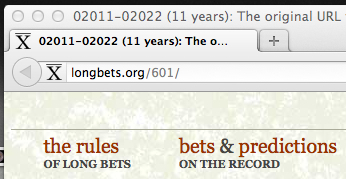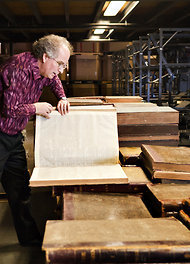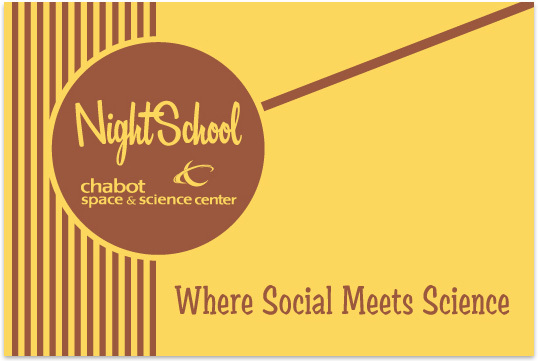Stewart Brand's Blog, page 91
March 23, 2012
Long Bets Bet – How Durable Are URLs?
A major concern of the digital dark age is link rot – the eventual failure of URLs to point to the intended files. As website maintenance falters for any number of reasons the pages can cease to be accessible, even though their addresses may be listed on many other sites.
The notion that Long Bets will be around to assess wagers many years (in some cases, over a hundred) into the future struck web developer Jeremy Keith as a bit far-fetched. In the spirit of the site, therefore, he made a Prediction that the URL pointing to the Prediction he was making wouldn't last 11 years.
He gave a talk at Webstock earlier this year called Of Time and the Network exploring our changing perception of time as a result of our changing level of interconnectedness. At 31:30 he discusses his thoughts on long-term challenges to the accessibility of URLs and dares someone to take him up on the Bet. You can read a transcription of the talk and a blog post he wrote about the Bet itself.
Another presenter at Webstock, Matt Haughey, was game. He gave a talk later in the conference about long-term thinking in the context of the web and, while consistent URLs weren't the main focus, he touched on the problem and actually officially challenged Keith in his presentation – check it out in the video at 18:50. He was also kind enough to transcribe his talk for those who'd like to read it.
We're very excited to have this Bet on record and it's being closely watched by our systems administrator, designer and web developer Benjamin Keating.
Keith and Haughey have each offered stakes of $500, with the winnings going to either the Bletchly Park Trust or the Internet Archive. You can read and comment on their arguments and the detailed terms we'll use to adjudicate the Bet at Long Bets.

March 22, 2012
Buffett gains ground in hedge fund bet
In 02008, Warren Buffet placed a Long Bet that will take until 02017 to resolve. He predicted that for those ten years, "the S & P 500 will outperform a portfolio of funds of hedge funds, when performance is measured on a basis net of fees, costs and expenses."
Below is a summary of how things went in the fourth year of this Bet, as published by Fortune Magazine:
Four years into a 10-year wager that the S&P 500 index will return more than a selection of hedge funds, Warren Buffett has almost caught up with his competition.
By Carol Loomis, senior editor-at-large
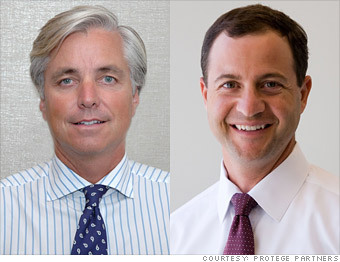 FORTUNE — Results are in for 2011, the fourth year of the 10-year wager that is sometimes called, rather loosely, The Million-Dollar Buffett Bet. In this competition about investment performance, Warren Buffett is contending that an S&P 500 index fund will outscore the average return of five hedge funds of funds picked by his betting opponent, New York asset management firm Protégé Partners.
FORTUNE — Results are in for 2011, the fourth year of the 10-year wager that is sometimes called, rather loosely, The Million-Dollar Buffett Bet. In this competition about investment performance, Warren Buffett is contending that an S&P 500 index fund will outscore the average return of five hedge funds of funds picked by his betting opponent, New York asset management firm Protégé Partners.
The standings now — which we will reveal in a minute — inevitably bring to mind Buffett's reaction after the bet's first year, 2008.
Both sides were clobbered in that market year from hell. But Protégé's fund-of-funds picks (whose names, by the terms of the bet, have never been publicly disclosed) were down, on the average, by "only" 23.9%. Vanguard's Admiral shares, which are Buffett's entry in the bet, lost a dismal 37%.
From this way-behind position, Buffett was quoted in Fortune as saying, "I just hope that Aesop was right when he envisioned the tortoise overtaking the hare."
And that's close to what has since happened. Buffett's index-fund tortoise won the second and third years and — you are reading it here first — also prevailed in the fourth. Not that the 2011 winner was much of a star: Admiral shares were up only 2.08%. But the five funds of funds, on the average, were down 1.86%.
All of which leaves tortoise and hare gasping alongside each other at the end of four years — and having absolutely nothing to cheer about. Protégé is still a bit ahead. But its funds of funds, on the average, are in the minus column for the period by 5.89%. Admiral shares are down 6.27%.
If we really mix metaphors and think about this contest as a baseball game, what we have here is a 0-to-0 tie after four innings, with each side doing nothing but striking out and alienating every fan watching.
The wager, however, has produced one sterling investment over the four years — and that was made, without brilliance aforethought, by Buffett and Protégé themselves. A little background: The idea was to set terms that would deliver $1 million to a charity chosen by the winner. If Buffett triumphs, the money goes to Girls Inc. of Omaha; if it's Protégé on top, the beneficiary is Absolute Returns for Kids.
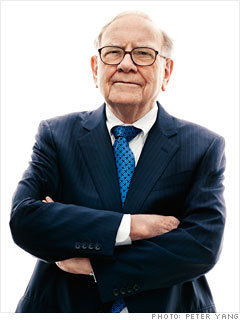 To ensure that $1 million would be there at the end of the bet, Buffett and Protégé each put up roughly $320,000 to buy a zero-coupon Treasury security. The total of about $640,000 was used to purchase a bond that will be worth $1 million at the bet's conclusion. This collateral is being overseen by the Long Now Foundation of San Francisco, which administers "long bets" set up by any competitors wanting to memorialize a gamble.
To ensure that $1 million would be there at the end of the bet, Buffett and Protégé each put up roughly $320,000 to buy a zero-coupon Treasury security. The total of about $640,000 was used to purchase a bond that will be worth $1 million at the bet's conclusion. This collateral is being overseen by the Long Now Foundation of San Francisco, which administers "long bets" set up by any competitors wanting to memorialize a gamble.
In a period of declining interest rates, which we certainly have had, what happens to a zero-coupon bond is that its market price races toward the maturity value — $1 million in this case. Recently, the value of the Buffett-Protégé bond was about $930,000, which means that in just over four years it is up 45% from the purchase price. That doesn't match the payoff from Apple (AAPL), but it's a heck of a run during a time when the general stock market was a dog.
Both Buffett and Ted Seides, the Protégé partner who engineered the 10-year-bet, are well aware that the returns to be earned by the zero-coupon bond from its price today can be no better than meager for the nearly six years left in the bet. That's because the ceiling is the bond's maturity value of $1 million. The view is definitely unappealing, says Seides: "We're looking at annual returns that won't be much better than 1%."
So the two sides began a few weeks ago to talk to the Long Now Foundation about its selling the zero-coupon bond and putting the proceeds into an investment that putatively could deliver the winning charity more than $1 million when the bet winds up. The first plan discussed was for half of the proceeds to be invested in Buffett's company, Berkshire Hathaway (BRKA), and the other half to be invested in a fund of funds that Protégé runs (and that has always been assumed to be one of the five funds of funds that Protégé picked for the bet). But that plan died because it would have required Long Now to become a partner in the fund and, for complex reasons arising from the securities laws, it did not meet the definition of a "qualified purchaser."
So a second plan was devised and is now going forward. It calls for the bond to be sold and the total proceeds to be invested in Berkshire Hathaway stock.
Naturally, some set of dire circumstances could make the roughly $930,000 put into Berkshire worth less than $1 million at the bet's conclusion on December 31, 2017. So Buffett has guaranteed $1 million by giving Long Now the right at the bet's conclusion to "put" the stock to him (or his estate) in exchange for that amount. In other words, $1 million becomes the floor for the winning charity, with the Berkshire investment establishing the prospect for more.
Meanwhile, the tortoise and the hare are dealing with the good market of 2012, which so far is suggesting that one or both might show — how radical! — a cumulative profit when the halfway mark in the bet is reached at the end of this year.
FORTUNE senior editor-at-large Carol Loomis, who wrote this article, is a longtime friend of Warren Buffett's, a Berkshire Hathaway shareholder, and editor of his annual letter to shareholders.
*********************
The news coverage around the above update of this bet has also revealed how the very fast news cycle can not only make mistakes, but actually report the exact opposite of what has occurred.
Note that the article above clearly explains that for the duration of the Bet, Buffet has been losing. Over the last three years he has been closing the gap created in the first year, but remains behind at present. Compare that fact to the coverage seen online yesterday as the update got picked up by various news outlets. Six of the ten stories listed below incorrectly lead the story by saying that Buffett is winning the bet:


March 21, 2012
The Evolution of Search Engines
Long before the era of the Internet, humans already dreamt of creating the perfect search engine.
In 01895 two Belgian lawyers, Paul Otlet and Henri la Fontaine, began building their Universal Bibliographic Repertory: a card catalog similar to that of a library, but vastly larger. It aimed to classify all human knowledge and provide searchable links to books, newspapers, and other media. Otlet envisioned a whole "World City" of knowledge that would link libraries with museums and universities, and make information accessible to people across the globe.
According to a recent NY Times article, Google has decided to pay homage to this pre-digital information network by announcing a partnership with the Mundaneum, the museum that grew out of Otlet and la Fontaine's project. Located in Mons, Belgium, the museum now houses part of the Repertory's archive, as well as rotating exhibits about knowledge accessibility and internationalization.
The move is part of Google's effort to explore the "roots of the internet" and the history of knowledge webs. As we learned from Alex Wright in a 02007 SALT lecture, this history is in fact quite impressive: attempts at information ordering may be as old as the technology of writing itself. Wright showed a video during the talk describing Otlet's envisioned Universal Bibliographic Repertory, which sounds remarkably similar to some of Google's own work:
From ancient Sumerian accounting, to Otlet's City of Knowledge and now Wikipedia and Google, our knowledge webs have undergone quite a bit of evolution. Still, the motivations behind them have changed little with the passing of time. It seems that the desire to order our world into networks of information is a basic part of human nature; perhaps even a fundamental building block of civilization itself.
It brings up the question: what will our search engines look like in 12,012?

March 19, 2012
Charles Mann Seminar Tickets
Seminars About Long-term Thinking
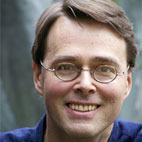
Charles Mann on "Living in the Homogenocene: The First 500 Years"
TICKETS
Monday April 23, 02012 at 7:30pm Cowell Theater at Fort Mason
Long Now Members can reserve 2 seats, join today! • General Tickets $10
About this Seminar:
Ever since Columbus, it's an alien invasive world. Everybody's germs, insects, vegetables, staple foods, rats, domestic animals, and even wildlife went everywhere, changing everything. That convulsion is still in progress.
Charles C. Mann is the author of 1491: New Revelations of the Americas Before Columbus and 1493: Uncovering the New World Columbus Created.

A Seed Vault for Culture?
Not sure what to do with your old paperbacks now that the latest bestsellers are available in electronic format? According to a recent article in the New York Times, Brewster Kahle would be happy to take them off your hands.
Kahle, a former SALT speaker, is undertaking the monumental task of collecting – and preserving – a hard copy of every book ever printed. From world-famous works of literature to long-forgotten obscurities, Kahle stores them all in a large Bay Area warehouse, so they'll be ready for the readers of the next millennium.
As founder of the Internet Archive, an online repository of web pages and other texts that is open to the general public, Kahle is committed to preserving information and knowledge for future generations. But as the New York Times writes, he wants to do more than simply scan old books into electronic format. While the world increasingly relies on digital data, Kahle believes that our best bet for long-term preservation may lie in old-fashioned bound paper and ink. A tangible original can ensure us that information will never be lost in the cracks of digital transformation – or worse, disaster:
"We must keep the past even as we're inventing a new future," [Kahle] said. "If the Library of Alexandria had made a copy of every book and sent it to India or China, we'd have the other works of Aristotle, the other plays of Euripides. One copy in one institution is not good enough."
The Long Now's Rosetta Project shares Kahle's interest in the long-term archiving and accessibility of knowledge. In fact, the project's expanding library of language documentation has been included in the Internet Archive as a special collection. And at Long Now, we too are interested in the longevity of non-digital backup: the micro-etched nickel Rosetta Disk has been designed to last until readers in the year 12,012 are ready to explore our second-millennium languages!

March 14, 2012
Alexander Rose at Chabot Space & Science Center March 16
Long Now Executive Director and 10,000-year Clock Project Manager Alexander Rose will discuss the ongoing construction of the 10,000-year Clock in western Texas at the Chabot Space & Science Center Friday night, March 16th. He's appearing at Chabot's monthly Night School, where,
students of life can explore, imagine, create and mingle in an incredibly inspiring and magical setting. Themes and activities reflect current events, favorite pastimes and playful experiences, each celebrating the unique, resourceful and exciting community of the East Bay.
Get back to school and unleash your inner nerd, spark a new hobby, hobnob with artists and experts, enjoy a show, and relax and contemplate your place in the universe!
The evening includes plenty of futuristic fun & games, music from DC Miggy Pop, several talks, a planetarium show, and more. The hours are 7pm – 11pm & tickets are $12.

Edward O. Wilson Seminar Tickets
Seminars About Long-term Thinking
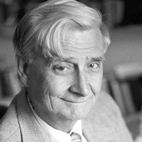
Edward O. Wilson on "The Social Conquest of Earth"
TICKETS
Friday April 20, 02012 at 7:30pm Palace of Fine Arts Theater
Long Now and Exploratorium Members can reserve 1 complimentary seat, join today! • General Tickets $10
Seminar and Conversation with Edward O. Wilson and Stewart Brand:
Presented by The Long Now Foundation and the Exploratorium
Edward O. Wilson's book will be for sale in the lobby both before and after the Seminar. There will be a reception in the lobby after the Seminar.
Edward O. Wilson has revolutionized science and inspired the public more often than any other living biologist. Now he is blending his pioneer work on ants with a new perspective on human development to propose a radical reframing of how evolution works.
First the social insects ruled, from 60 million years ago. Then a species of social mammals took over, from 10 thousand years ago. Both sets of "eusocial" animals mastered the supremely delicate art of encouraging altruism, so that individuals in the groups would act as if they value the goal of the group over their own goals. They would specialize for the group and die for the group. In recent decades the idea of "kin selection" seemed to explain how such an astonishing phenomenon could evolve. Wilson replaces kin selection with "multi-level selection," which incorporates both individual selection (long well understood) and group selection (long considered taboo). Every human and every human society has to learn how to manage adroitly the perpetual ambiguity and conflict between individual needs and group needs. What I need is never the same as what we need.
E. O. Wilson's current book is The Social Conquest of Earth. His previous works include The Superorganism;The Future of Life; Consilience; Biophilia; Sociobiology; and The Insect Societies.

March 9, 2012
Mark Lynas Seminar Media
 This lecture was presented as part of The Long Now Foundation's monthly Seminars About Long-term Thinking.
This lecture was presented as part of The Long Now Foundation's monthly Seminars About Long-term Thinking.
The Nine Planetary Boundaries: Finessing the Anthropocene
Tuesday March 6, 02012 – San Francisco
Audio is up on the Lynas Seminar page, or you can subscribe to our podcast.
*********************
The Quantified Planet - a summary by Stewart Brand
"About 74,000 years ago," Lynas began, "a volcanic event nearly wiped out humanity. We were down to just a thousand or so embattled breeding pairs. We've made a bit of a comeback since then. We're over seven billion strong. In half a million years we've gone from prodding anthills with sticks to building a worldwide digital communications network. Well done! But… there's a small problem. In doing this we've had to capture between a quarter and a third of the entire photosynthetic production of the planet. We've raised the temperature of the Earth system, reduced the alkalinity of the oceans, altered the chemistry of the atmosphere, changed the reflectivity of the planet, hugely affected the distribution of freshwater, and killed off many of the species that share the planet with us. Welcome to the Anthropocene, our very uniquely human geological era."
Some of those global alterations made by humans may be approaching tipping points—thresholds—that could destabilize the whole Earth system. Drawing on a landmark paper in Nature in 2009 ("A Safe Operating Space for Humanity," by Johan Rockström et al.) Lynas outlined the nine boundaries we should stay within, starting with three we've already crossed. 1. Loss of biodiversity reduces every form of ecological resilience. The boundary is 10 species going extinct per million per year. Currently we lose over 100 species per million per year. 2. Global warming is the most overwhelming boundary. Long-term stability requires 350 parts per million (ppm) of carbon dioxide in the atmosphere; we're currently at 391 ppm and rising fast. "The entire human economy must become carbon neutral by 2050 and carbon negative thereafter." 3. Nitrogen pollution. With the invention a century ago of the Haber-Bosch process for creating nitrogen fertilizer, we doubled the terrestrial nitrogen cycle. We need to reduce the amount of atmospheric nitrogen we fix per year to 35 million tons; we're currently at 121 million tons.
Other quantifiable boundaries have yet to be exceeded, but we're close. 4. Land use. Every bit of natural landscape lost threatens ecosystem services like clean water and air and atmospheric carbon balance. "Already 85% of the Earth's ice-free land is fragmented or substantially affected by human activity." The danger point is 15% of land being used for row crops; we're currently at 12%. 5. Fresh water scarcity. Increasing droughts from global warming will make the problem ever worse. In the world's rivers, "the blue arteries of the living planet," there are 800,000 dams with two new large ones built every day. The numeric limit is thought to be 4,000 cubic kilometers of runoff water consumed per year; the current number is 2,600. 6. Ocean acidification from excess atmospheric carbon dioxide is increasingly lethal to ocean life such as coral reefs. The measure here is "aragonite saturation level." Before the industrial revolution it was 3.44; the limit is 2.75; we're already down to 2.90. 7. The ozone layer protects the Earth from ultraviolet radiation. One man (Thomas Midgley) invented the chlorofluorocarbon coolant that rapidly reduced stratospheric ozone, and one remarkable agreement (Montreal Protocol, 1987) cut back on CFCs and began restoring the ozone layer. (In Dobson units the limit is 276; before Midgley it was 290; we're now back up to 283.)
Two boundaries are so far unquantifiable. 8. Chemical pollution. Rachel Carson was right. Human toxics are showing up everywhere and causing harm. Coal-fired power plants are one of the worst offenders in this category. (Lynas added that nuclear waste belongs in this category but "the supposedly unsolved problem of nuclear waste hasn't so far harmed a single living thing." 9. Atmospheric aerosols—airborne dust and smoke. It kills hundreds of thousands of people annually, the soot causes ice to melt faster, and everyone wants to get rid of it. But one beneficial effect it has is cooling, so Lynas proposes "we could move this pollution from the troposphere where people have to breathe it up to the stratosphere where it can still cool the Earth and no one has to breathe it. That's called geoengineering."
Lynas proposed that the goal for the future should be to get the whole world out of poverty by 2050 while staying within the planetary boundaries. Among the solutions he proposed are: clean cookstoves for the poor (they cause 1.6 million deaths a year); better GM crops for nitrogen efficiency and concentrated land use; integral fast reactors which run on nuclear waste (a recent calculation shows the UK could get 500 years of clean energy from its present waste, and the resulting IFR waste is a problem for 300 years, not for thousands of years); international treaties, which are crucial for dealing with global problems; carbon capture (everything from clean coal to biochar); and ongoing "dematerialization," doing ever more with ever less, including more intense farming on less land. "Peak consumption," Lynas noted, has already arrived in much of the developed world.
Subscribe to our Seminar email list for updates and summaries.

Jim Richardson Seminar Media
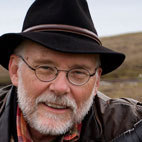 This lecture was presented as part of The Long Now Foundation's monthly Seminars About Long-term Thinking.
This lecture was presented as part of The Long Now Foundation's monthly Seminars About Long-term Thinking.
Heirlooms: Saving Humanity's 10,000-year Legacy of Food
Wednesday February 22, 02012 – San Francisco
Video is up on the Richardson Seminar page for Members.
*********************
Audio is up on the Richardson Seminar page, or you can subscribe to our podcast.
*********************
Save Agricultural Biodiversity - a summary by Stewart Brand
Humanity's agricultural legacy is on a par with any of our great cultural legacies, Richardson said, but preserving it is not just a matter of honoring the history and richness of our most fundamental civilization-enabling technology. For the health of future crops and livestock we need the deep genetic reservoir of all those millennia of sophisticated breeding. A million people died in the Irish Potato Famine because the whole nation depended on just two varieties of potato. In Peru, where potatoes originally came from, Richardson visited a field at 14,000 feet where 400 varieties of potato (with names like "Ashes of the Soul" and "Puma Paw") are grown in just two acres. The local 1,300 varieties of potato are managed by a "Guardian of the Potatoes," whose job it is in the community to know the story and uses of all the potatoes.
The accumulated wisdom in the crops and livestock is profound. We've been breeding cattle for 10,000 years, goats for 9,000 years, dogs for 12,000 years, chickens for 8,000 years, llamas for 6,500 years, horses for 6,000 years, camels for 4,000 years. All those millennia we have been in deep partnership with the animals. All of our staple foods are ancient. Wheat has been bred for 11,000 years, corn for 8,000 years, rice for 8,000 years, potatoes for 7,000 years, soybeans for 5,000 years
"For 9,900 years," Richardson said, "we've been building up variety in domesticated crops and livestock—this whole wealth of specific solutions to specific problems. For the last 100 years we've been throwing it away." 95% is gone. In the US in 1903 there were 497 varieties of lettuce; by 1983 there were only 36 varieties. (Also changed from 1903 to 1983: sweet corn from 307 varieties to 13; peas from 408 to 25; tomatoes from 408 to 79; cabbage from 544 to 28.) Seed banks have been one way to slow the rate of loss. The famous seed vault at Svalbard serves as backup for the some 1,300 seed banks around the world. The great limitation is that seeds don't remain viable for long. They have to be grown out every 7 to 20 years, and the new seeds returned to storage.
Even with living heirlooms, the rule is Use It Or Lose It. Devotees of exotic cattle say "You have to eat them to save them." With dramatic photos Richardson compared the livestock shows in Wales with the livestock markets in Ethiopia. You see children adoring the young animals and breeders obsessing on details of excellence and uniqueness. "One guy says, 'You see that sheep with the heart-shaped spot on his left shoulder? I'll bet you I can move it to his rump in four generations.'" There's a sheep called the North Ronaldsay that is bred to live solely on seaweed on the coast. Ethiopia has some specialists, like the Sheko cattle that are resistant to tsetse flies, but unlike in Europe, most of their breeds have to be generalists capable of providing meat, milk, labor (such pulling plows), and warmth in the winter.
Helping preserve agricultural biodiversity is open to anyone. The Seed Savers Exchange in Decorah, Iowa, has 13,000 members. Their catalog is a cornucopia of heirloom garden delights, and members learn how to produce and store their own seeds and then share them. "It's a wonderful example of citizens participating in the process." And we can always acquire a new taste for old foods. Teff! Quinoa! Amaranth! Randall Lineback cows! You have to eat them to save them.
PS: Jim Richardson's beautiful heirloom photos and article may be found here.
Subscribe to our Seminar email list for updates and summaries.

March 8, 2012
From Above
While searching for a Long Short that could help us visualize the Anthropocene for Mark Lynas' SALT, we came upon an amazing resource: The Gateway to Astronaut Photography of Earth. Contained therein are well over a million images of our planet taken from space.
And since NASA is a public institution paid for by American tax dollars, their policy for using the photos is basically, "They're yours – have at 'em!" (Just give them some credit – they did go to space to take them for us…)
One particularly exciting section within this massive collection is a series of photos taken by astronauts on the International Space Station using low-light cameras. Stitched together into videos, these images create amazing time-lapse depictions of the Earth and human civilization rotating and pulsing in a starry sky. Despite being over 200 miles below, humanity features significantly in the videos, weaving across the landscape, clustering around water sources and glowing through cloud cover.
Long Now videographer Chris Baldwin created a compilation of some of those videos and set it to Brian Eno's aptly titled 'Late Anthropocene' from Small Craft on a Milk Sea.


Stewart Brand's Blog
- Stewart Brand's profile
- 291 followers


